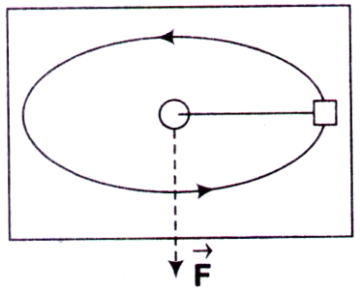The moment of inertia of a uniform sphere of radius, r about an axis passing through its centre is given by $$\frac{2}{5}\left( {\frac{{4\pi }}{3}{r^5}\rho } \right).$$ A rigid sphere of uniform mass density $$\rho $$ and radius R has two smaller spheres of radii $$\frac{R}{2}$$ hollowed out of it as shown in the figure given below.

The moment of inertia of the resulting body about Y-axis is
A. $$\frac{{\pi \rho {R^5}}}{4}$$
B. $$\frac{{5\pi \rho {R^5}}}{{12}}$$
C. $$\frac{{7\pi \rho {R^5}}}{{12}}$$
D. $$\frac{{3\pi \rho {R^5}}}{4}$$
Answer: Option B
A. increases till mass falls into hole
B. decreases till mass falls into hole
C. remains constant
D. becomes zero at radius r1, where 0 < r1 < r0
A. $$\frac{c}{3}$$
B. $$\frac{{\sqrt 2 }}{3}c$$
C. $$\frac{c}{2}$$
D. $$\frac{{\sqrt 3 }}{2}c$$
The Hamiltonian corresponding to the Lagrangian $$L = a{{\dot x}^2} + b{{\dot y}^2} - kxy$$ is
A. $$\frac{{{p_x}^2}}{{2a}} + \frac{{{p_y}^2}}{{2b}} + kxy$$
B. $$\frac{{{p_x}^2}}{{4a}} + \frac{{{p_y}^2}}{{4b}} - kxy$$
C. $$\frac{{{p_x}^2}}{{4a}} + \frac{{{p_y}^2}}{{4b}} + kxy$$
D. $$\frac{{{p_x}^2 + {p_y}^2}}{{4ab}} + kxy$$
A. circular
B. elliptical
C. parabolic
D. hyperbolic


Join The Discussion